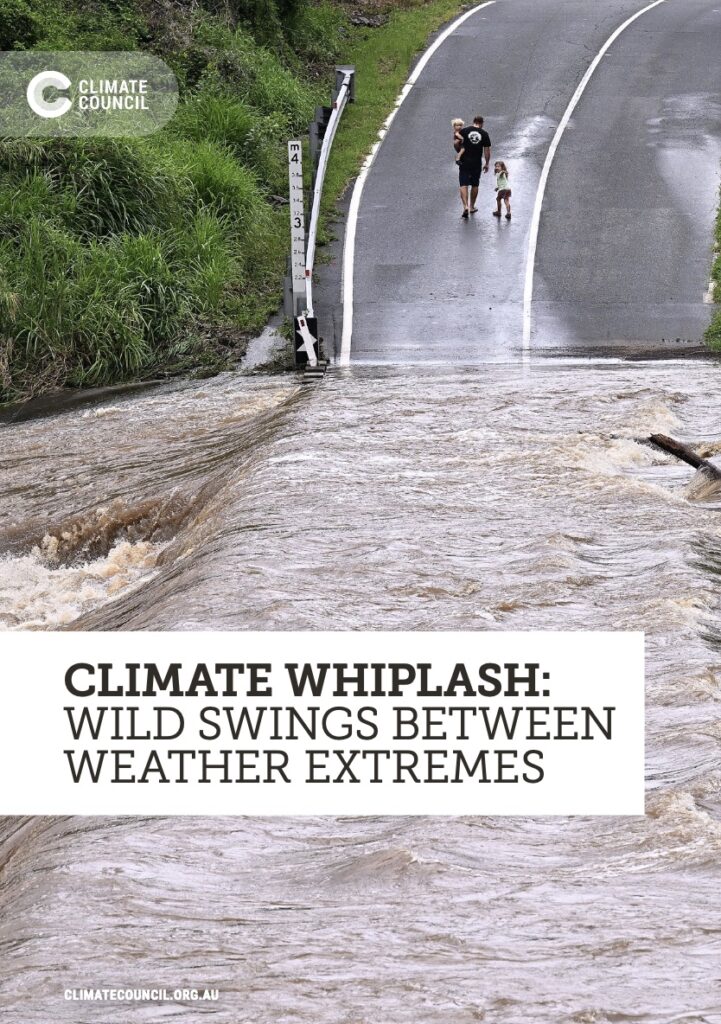New Report Highlights Dangerous Climate Whiplash Impacts On Global Cities

Table of Contents
Increased Frequency and Intensity of Extreme Weather Events
Climate whiplash, driven by climate change, is leading to a dramatic increase in both the frequency and intensity of extreme weather events, significantly impacting urban environments.
Heatwaves and Droughts
Prolonged heatwaves and droughts are placing immense strain on urban infrastructure, public health, and water resources. The consequences are far-reaching and devastating:
- Increased mortality rates: Extreme heat directly contributes to heatstroke and exacerbates existing health conditions, leading to higher mortality rates, particularly among vulnerable populations.
- Strain on energy grids: Increased demand for air conditioning during heatwaves can overwhelm energy grids, causing power outages and disruptions to essential services.
- Water shortages: Prolonged droughts deplete reservoirs and reduce water availability, impacting drinking water supplies, agriculture, and industrial processes.
- Wildfires: Dry conditions create ideal conditions for wildfires, leading to significant property damage, air pollution, and displacement of residents.
For example, the 2022 European heatwave resulted in thousands of excess deaths and widespread disruption, highlighting the vulnerability of urban populations to extreme heat. Similarly, cities in California frequently experience severe wildfires fueled by prolonged droughts, causing billions of dollars in damage and displacing thousands.
Flash Floods and Intense Precipitation
Climate whiplash also manifests as unpredictable and devastating flash floods resulting from intense precipitation. These events cause significant damage and disruption to urban areas:
- Urban flooding: Overwhelmed drainage systems lead to widespread flooding, inundating streets, homes, and businesses.
- Damage to transportation networks: Flooding can severely damage roads, bridges, and public transportation systems, disrupting commutes and hindering emergency response.
- Sewage overflow: Heavy rainfall can overwhelm sewage systems, leading to contamination of water supplies and posing serious health risks.
- Displacement of populations: Severe flooding can force residents to evacuate their homes, causing displacement and disruption to daily life.
Cities like Jakarta, Indonesia, and Mumbai, India, regularly experience devastating flash floods, causing billions in damages and significant loss of life. These events exemplify the destructive power of intense rainfall exacerbated by climate whiplash.
Economic and Social Disruptions Caused by Climate Whiplash
The consequences of climate whiplash extend beyond immediate physical damage, inflicting significant economic and social disruptions on global cities.
Economic Impacts
Extreme weather events associated with climate whiplash impose substantial economic burdens on cities:
- Property damage costs: Flooding, wildfires, and high winds cause extensive damage to buildings, infrastructure, and personal property, incurring massive repair and replacement costs.
- Business interruption: Businesses are often forced to close temporarily due to extreme weather events, resulting in lost revenue and potential job losses.
- Insurance claims: The increasing frequency and severity of extreme weather events are driving up insurance premiums and creating challenges for insurers.
- Reduced tourism: Extreme weather can deter tourists, negatively impacting the economies of cities that rely heavily on tourism revenue.
The economic costs of extreme weather events are staggering. For instance, Hurricane Katrina caused over $100 billion in damages, demonstrating the potential for catastrophic economic losses from a single event.
Social Impacts
The social consequences of climate whiplash are equally profound and far-reaching:
- Increased health issues: Extreme heat, flooding, and air pollution contribute to various health problems, including respiratory illnesses, heatstroke, and waterborne diseases.
- Mental health problems: Experiencing extreme weather events can have significant impacts on mental health, leading to anxiety, depression, and PTSD.
- Social unrest: Resource scarcity and displacement caused by extreme weather can exacerbate existing social inequalities and lead to social unrest.
- Widening inequality: Vulnerable populations, such as low-income communities and marginalized groups, are disproportionately affected by the impacts of climate whiplash, further widening existing inequalities.
The social costs of climate change are often overlooked but are equally important to address. Ensuring equitable access to resources and support for vulnerable populations is crucial for building resilient communities.
Building Urban Resilience to Climate Whiplash
Addressing the challenges posed by climate whiplash requires a multifaceted approach encompassing both adaptation and mitigation strategies.
Adaptation Strategies
Cities can implement several strategies to mitigate the effects of climate whiplash:
- Improved drainage systems: Investing in modern, efficient drainage systems can reduce the risk of urban flooding during intense rainfall.
- Early warning systems: Implementing advanced weather forecasting and early warning systems allows cities to prepare for and respond to extreme weather events more effectively.
- Green infrastructure: Integrating green spaces, such as parks, green roofs, and urban forests, can help mitigate the urban heat island effect and absorb excess rainfall.
- Resilient building codes: Enacting stricter building codes that incorporate climate resilience can reduce damage to buildings during extreme weather events.
Many cities are already implementing these adaptation strategies with varying degrees of success. For instance, Rotterdam's innovative water management system has significantly reduced the city's vulnerability to flooding.
Mitigation Efforts
While adaptation is crucial, it's equally important to reduce greenhouse gas emissions to slow the pace of climate change and lessen the severity of future climate whiplash events. This requires global efforts:
- Transition to renewable energy: Shifting towards renewable energy sources, such as solar and wind power, is essential for reducing carbon emissions.
- Sustainable transportation: Promoting public transportation, cycling, and walking can significantly reduce transportation-related emissions.
- Carbon capture technologies: Investing in research and development of carbon capture technologies can help remove carbon dioxide from the atmosphere.
International agreements like the Paris Agreement are crucial steps towards global climate action. Cities also play a pivotal role in reducing their carbon footprints through local initiatives and policies.
Conclusion
This report unequivocally demonstrates the dangerous impacts of climate whiplash on global cities, highlighting the escalating frequency and intensity of extreme weather events and their profound economic and social consequences. The findings underscore the urgent need for cities to prioritize both adaptation and mitigation strategies to build resilience against future climate shocks. Take action today to understand the escalating threat of climate whiplash and support initiatives to build resilient and sustainable urban environments. Download the full report [link to report] and join the conversation about climate change adaptation in your city.

Featured Posts
-
 101 Million In Dei Funding Eliminated Musks Cost Cutting Measures Highlighted By Trump
May 31, 2025
101 Million In Dei Funding Eliminated Musks Cost Cutting Measures Highlighted By Trump
May 31, 2025 -
 Kaitlyn Devers Breakout Role A Crime Drama Masterpiece Before The Last Of Us
May 31, 2025
Kaitlyn Devers Breakout Role A Crime Drama Masterpiece Before The Last Of Us
May 31, 2025 -
 Bmw Open Zverev Rallies Into Semifinals
May 31, 2025
Bmw Open Zverev Rallies Into Semifinals
May 31, 2025 -
 Is This The Good Life Evaluating Your Current Path And Making Changes
May 31, 2025
Is This The Good Life Evaluating Your Current Path And Making Changes
May 31, 2025 -
 Nfl Draft Mel Kiper Jr S Projection For The Cleveland Browns No 2 Pick
May 31, 2025
Nfl Draft Mel Kiper Jr S Projection For The Cleveland Browns No 2 Pick
May 31, 2025
